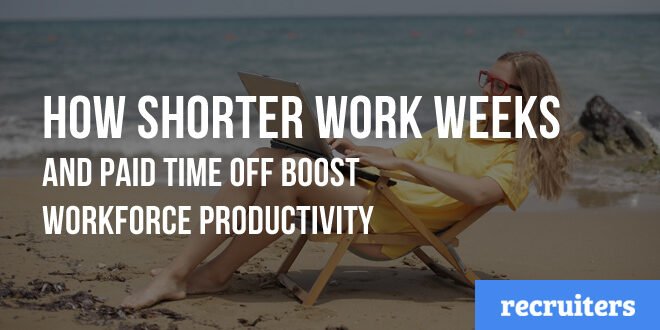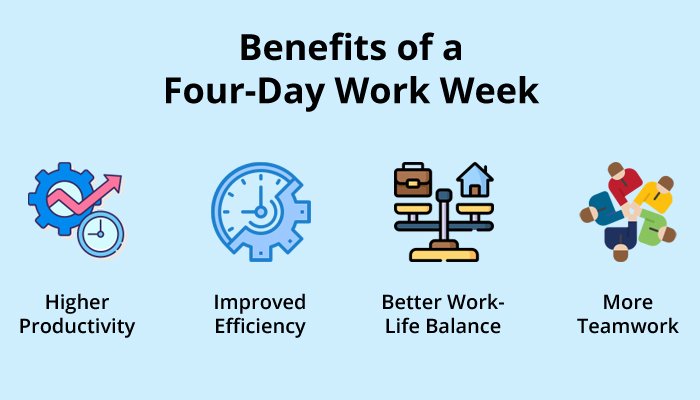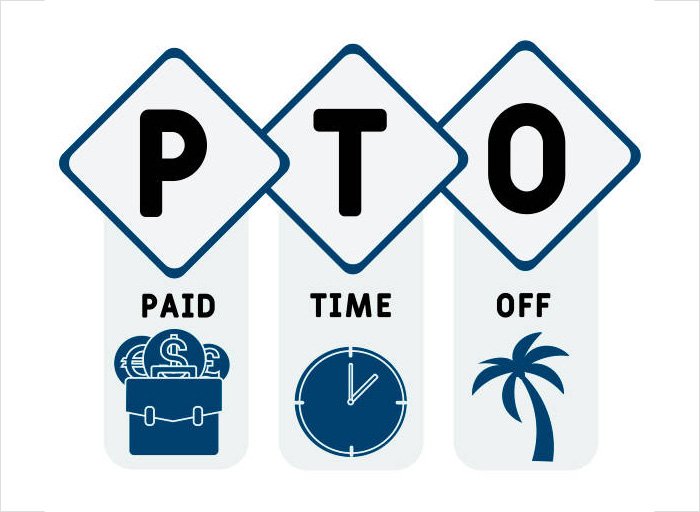How Shorter Work Weeks and Paid Time Off Boost Workforce Productivity

Plenty of people talk about shorter work weeks being conducive to higher productivity, but is that true?
For decades, employees have been dreaming of working less for full-time pay, but until recently, organizations weren’t really on board.
Times have changed and the shorter work week is becoming a reality. Companies with experience shortening their work weeks say it’s actually the reason they were able to achieve a higher degree of success. Combine a short work week with paid time off and you’ve got a winning formula for high performance.
Before diving into how shorter work weeks and paid time off make workers more productive, let’s look at why this topic is not only relevant, but important at this point in time.
Businesses are struggling to acquire talent
Many businesses are struggling to acquire and retain talent and have no choice but to shorten work weeks for certain employees. In the healthcare industry, for example, due to the shortage of caregivers, providers frequently hire part-time caregivers even when full-time availability is a company requirement.
Lack of full-time availability makes it tough for agencies to get full-time employees, but it also prevents major burnout, since caregiving can be extremely rough. However, to make it work, agencies are hiring multiple part-time caregivers and it seems like this is trending in other industries as well.
The pandemic is driving a shorter work week

In 2021, a whopping 47 million people quit their jobs, making the peak of the COVID-19 pandemic the tightest labor market on record. This period of time has been dubbed “The Great Resignation” and it’s been uncharted territory for businesses.
While some organizations have decided to leave positions open, others have been trying desperately to fill those positions without much luck. When the labor pool is thin, it takes some serious effort to run a business and fill positions at the same time. Companies that don’t use a staffing agency have to go through the entire recruiting process, which pulls them away from other important tasks.
While it takes time to hire new employees, the biggest problem companies face is finding candidates in the first place. Many people don’t want to work a full-time, 40-hour work week regardless of the pay. They’re starting to value their time and energy more than anything, and that doesn’t appear to be changing anytime soon.
Why is the workforce pool so thin?
During the pandemic, millions of people were forced to go on unemployment, and since unemployment compensation was higher than usual, many had no desire to find a job until they had no choice. The freedom of staying at home and collecting a check was too good, and they didn’t want to let that go.
Other people simply quit their jobs for a variety of reasons. The most common reasons were challenges obtaining childcare, health concerns over COVID-19, and mandatory isolation for those who contracted the virus. Many people who quit their jobs were also able to get unemployment. However, a large number just chose not to go back to work.
This might explain why, despite a drop in the unemployment rate, in 2021, there were nearly 3 million fewer people available in the workforce compared to pre-pandemic statistics. The unemployment rate doesn’t account for people who have just decided not to go back to work.
The workforce is exhausted
The underlying reason people felt so good collecting unemployment isn’t necessarily because they’re lazy, but rather, people are exhausted from working their standard, low-paying 9-5 jobs with no real time off. Once people get a break from working so much, it’s hard to go back to that way of life.
Although, quitting isn’t the only way people can get a break. That’s where shorter work weeks come into play. Four-day work weeks, for example, aren’t new, but they are starting to become more common as more organizations test them out.
Are four-day work weeks beneficial?

Just like remote work supports productivity, so do four-day work weeks. In fact, the two are closely tied together. Many organizations are able to offer four-day work weeks because they have access to worldwide, remote talent.
The pandemic has normalized remote work, and many businesses have moved some, if not all, of their operations to the cloud. Although some employers were concerned that productivity would fall by allowing employees to work from home, the opposite happened – productivity increased – and the same is happening with four-day work weeks.
Shorter work weeks and working from home are two of the best ways to reduce or eliminate burnout. When employees have a healthy work-life balance and don’t feel burned out, they’re more productive.
Several countries have run experiments with four-day work weeks to see what would happen.
- Japan. Microsoft’s location in Japan tested a four-day work week that resulted in a 40% increase in sales. Even the country’s own government was on board with a four-day work week and suggested Japanese companies should allow their employees to work four days a week. Some companies, like Panasonic, provided that option to workers.
- Iceland. From 2015 through 2019, Iceland’s government experimented with four-day work weeks and it was a success. Since then 86% of workers now have the right to work shorter hours for the same pay.
Several companies have also done the same thing by testing four-day work weeks. For instance, Buffer, a social media scheduler app, tested a shorter work week in April 2020. Surprisingly, employee output doubled for the company’s infrastructure and mobile teams, and so the four-day work week is now permanent. Now that a year and a half has passed, employees are reporting they are happier and more productive.
Bolt, a San Francisco startup, tested the same four-day work week from August-October 2021. More than 85% of employees said they were more efficient with the change and now, the shorter work week is permanent.
There is even a nonprofit organization called 4 Day Week Global that advocates for employees to be dropped to 32-hour work weeks while retaining their current pay and benefits. More organizations are starting to get on board with this movement, beginning with Kickstarter, whose Chief Strategy Officer sits on the board.
Organizations that try this movement through 4 Day Week Global are measured during their trial to see how it affects the company’s productivity. As it turns out, more flexibility and freedom actually produce higher levels of productivity and output.
Shorter work weeks reduce “meeting burnout”
Employees can get burned out from too many meetings, and this is actually a common problem. Often, people are forced to attend meetings that don’t concern them, and many are required to stay for an entire meeting when their portion ends early. It’s also common for employees to be called into unexpected meetings when they’re in the middle of an important task.
There really is such a thing as too many meetings, and maintaining a short work week combined with remote work is actually the best solution to this problem. When a work week is only four days long, every meeting needs to be intentional or it will just be a waste of time. However, with remote workers, some companies find that most meetings become unnecessary.
When a company allows employees to work remotely, they can provide relevant information in a self-serve fashion. Employees can gather their information from the company’s intranet instead of having to attend a long meeting over Zoom.
Paid time off makes employees feel valued

When employees feel valued, productivity and efficiency increase. Providing paid time off is one of the best ways to make employees feel valued, therefore, it’s also an excellent way to increase productivity.
Companies that provide paid time off are more desirable to work for considering most people can’t afford to take time off without pay. As much as they need time off, if it’s not paid, they won’t usually take the time they need, which hurts productivity and can lead to exhaustion.
There are several types of paid time off, but the most common are holidays and personal time. While it’s standard in the UK for employers to provide paid holiday time, it’s not that common in the United States. Some corporations provide salaried workers with paid holidays, but most hourly workers never see any form of paid time off and are required to work through the holidays if the business is open.
Whether it’s personal time off or holiday pay, providing paid time off in any form will contribute to higher levels of productivity. It will also help employees feel fulfilled with the work they perform, which ultimately leads to higher retention rates.
Does your organization need top talent? We can help!
Open positions kill productivity and create lost revenue, so when you need to fill those open positions, you don’t have time to waste. That’s where we can help.
No matter what industry you’re in, we can help you find the right people to fill your open roles fast. The sooner you fill your positions, the sooner your productivity will get back on track.
Finding talent with a top recruiting firm doesn’t need to be a challenge – let us do the work for you. Whether you have a traditional or short work week, we’ll help you find the talent you need to support your organization. Request a free consultation to learn more about how our staffing services can help you get the workforce you need to succeed.
- Mastering Internal Mobility: A Comprehensive Guide to Success - August 10, 2023
- Effective Recruiting Strategies in a Competitive Sales Labor Market - July 27, 2023
- 6 Essential Factors to Attract Top Talent - July 19, 2023
